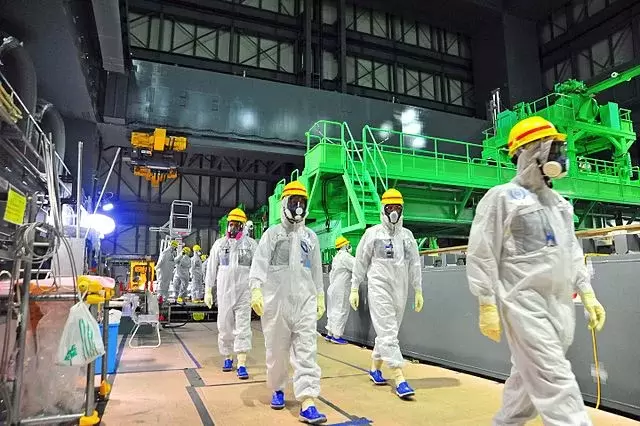Although Nuu-chah-nulth-aht consume six times more seafood than the typical Canadian, exposure to radioactivity from the ocean is negligible, according to a recent study.
This is the conclusion of a team of researchers who studied radiation levels in sockeye salmon, Dungeness crab and giant kelp caught from traditional harvesting areas off Vancouver Island’s west coast. The study also surveyed over 100 Nuu-chah-nulth community members about their diets. As a partnership between the Nuu-chah-nulth Tribal Council, the Vancouver Aquarium and Simon Fraser University, the project was initiated in 2014 to determine if the Fukushima Daiichi nuclear disaster was harming those who eat seafood on the other side of the Pacific. The radiation study was funded by the First Nations Health Authority.
In 2011 an earthquake and tsunami off the west coast of Japan caused a massive meltdown to a nuclear power plant, releasing radioactive material into the Pacific Ocean. But seafood caught off of Vancouver Island contains a safe level of radiation, said Dr. Peter Ross, director of the Vancouver Aquarium’s Ocean Research Program. On June 15 Ross and colleague Dr. Michelle Nelson presented the research study’s findings to representatives from Nuu-chah-nulth Nations at the Council of Ha’wiih Forum on Fisheries in Tsaxana, near Gold River, B.C.
“We have what I think is a good news story for you and it’s hopefully something that I think will reassure,” he said.
No trace of Fukushima contamination was found in the crab and kelp included in the study, while a radiation level of 1.8 Becquerel per kilogram from non-natural sources was detected in sockeye salmon sampled. Food commonly bought in the supermarket has far higher levels of natural radiation, with milk containing 50 Becquerels, beef holding 125 and potatoes having 165 Becquerels per kilogram. All of these levels are higher than the non-natural radiation found in sockeye salmon, yet still safe for eating, notes the study.
After one year of eating sockeye salmon, the study states that the radiation dose for the average Nuu-chah-nulth-aht would be 10,000 times lower than what is considered a concerning level for human consumption.
Radiation traced to Fukushima composes a tiny fraction of what was found in the sockeye salmon, said Ross. The majority of radiation detected in west coast fish comes from natural sources, while the cause of non-natural radiation includes the Fukushima disaster and Cold War-era weapons testing from the 1960s and 1970s.
“About half of the [non-natural] radiation that we’re seeing in our sockeye salmon is thought to come from nuclear weapons testing,” Ross said. “That’s 50 years later, so we still have a legacy.”
The small level found in seafood is a reassuring message for Nuu-chah-nulth-aht, considering the volume of seafood they typically consume. Based on surveys by the researchers, the average Nuu-chah-nulth person eats 53 kilograms (117 pounds) of seafood a year, with one respondent eating as much as 236 kilograms in a year. Nine kilograms is the average consumption amount for a Canadian.
Although the levels detected are minute, future monitoring is needed as Fukushima continues to release radiation into the ocean six years after the disaster, said Ross and Nelson.







